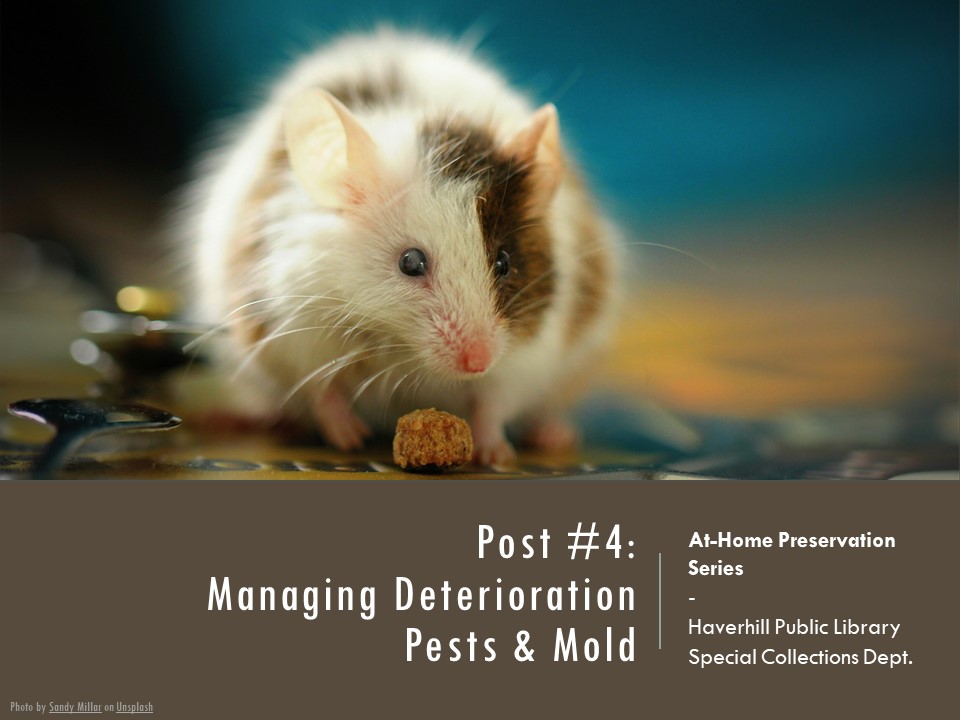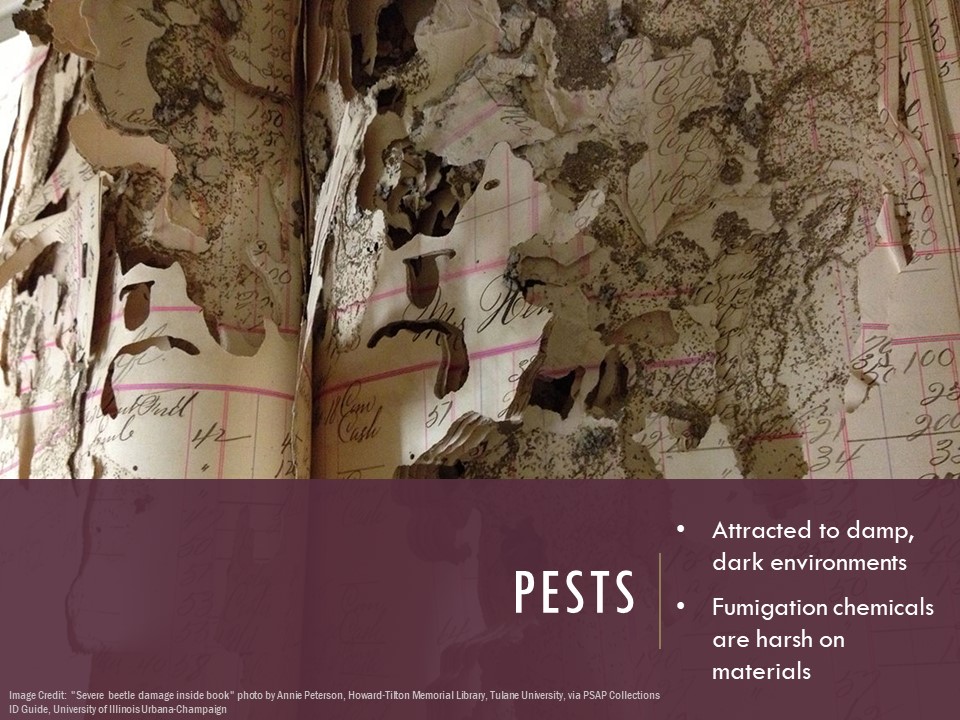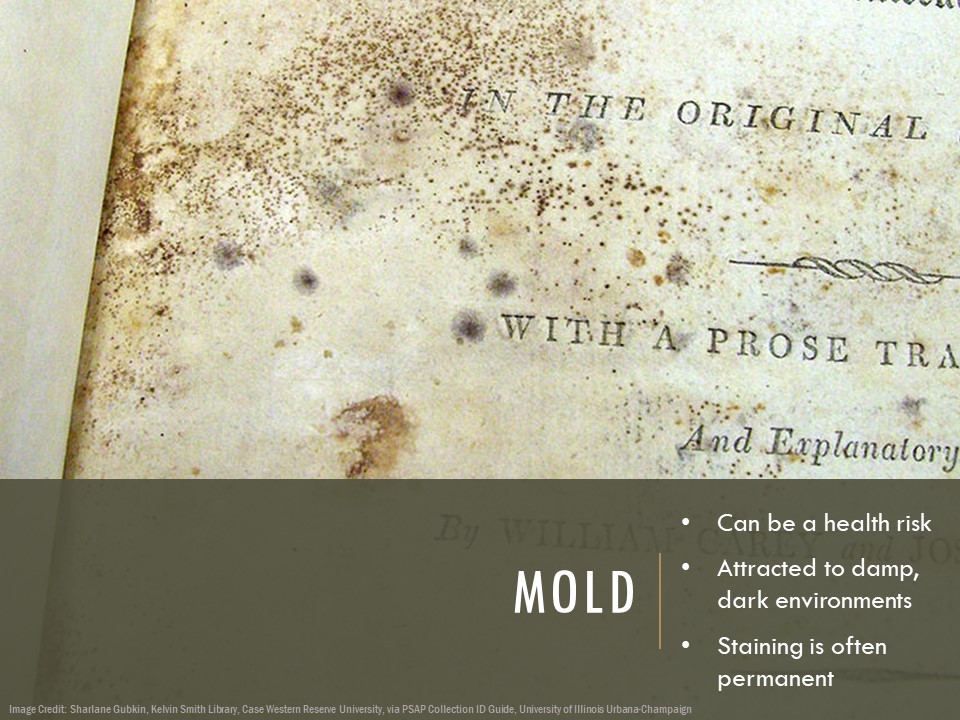
As a quick recap from the last post, we are discussing preservation measures to counter issues in our home environment, including:
- Temperature, Humidity & Light
- Pollution, Dust & Clutter
- Pests & Mold
- Inherent Material Weaknesses
We covered the first two bullet points in previous posts; in this post we are discussing pests and mold – which are not so cute in practice as the fellow in the cover image!

Various pests can really do a lot of damage. They are attracted to dark, undisturbed areas where they can eat things like paper, dust, adhesives, and fibers, and lay their eggs and keep the cycle going.
Not all insects will directly eat collections materials; the most common damaging ones include silverfish and the literal bookworm, which is a beetle in its larval stage. The above image shows the damage of a bookworm infestation.
This example is rather extreme, but can happen whenever an item is tucked away and goes unchecked for quite sometime. Keeping your collections clean and organized, and checking in on them every so often, is a good strategy for keeping them in good condition.
Two other good strategies to avoid infestation are stopping up points of entry and keeping food and waste away from collections. But what if you do find an infestation? Unfortunately, extermination and fumigation chemicals are harsh and cause damage to your collections in and of themselves. Instead, consult an expert or professional website for advice on treating materials by safely freezing and thawing them. A great website for information is museumpests.net.

The last category of outside causes of deterioration is mold. And it’s a big one!
For better or worse, mold spores are all around us in any regular, non-sterile environment. These spores are generally harmless until certain environmental conditions bring them out of dormancy, such as high humidity and temperature, often helped along by stagnant air.
The good news is that hot and humid rooms with no air circulation are uncomfortable for us to live in, too, so by keeping your collections in around the living areas in your home is likely to stave off any mold growth. Keep your heirlooms out of basements and attics.
If you come across some mold, the first thing to think about it whether it’s effecting your personal health and safety. People have varying tolerance for mold and some types of mold are particularly hazardous – think black mold or any mold that is making you feel sick in any way. If you are having an adverse reaction, bring in someone else to deal with the problem, such as a professional from a recovery company.
If you are not noticing any reaction, go ahead and put on a mask as a precaution and take a closer look at the mold. If it looks wet or fuzzy, it’s active and needs to be deactivated before moving on.
If it’s dry and powdery, it’s inactive (or possibly not mold at all), and it’s time to clean it up (following safety guidelines, of course). I recommend using a free resource to guide you through these processes and help you decide whether to call in a professional or deal with it yourself. NEDCC in Andover has a great one!
Next time, we’ll wrap up the deterioration discussion with an explanation of inherent material weaknesses. For example, why old newsprint crumbles at the slightest touch. See you then!
Trying to find this whole series? Click here.
Trying to get back to the Special Collections homepage? Click here.